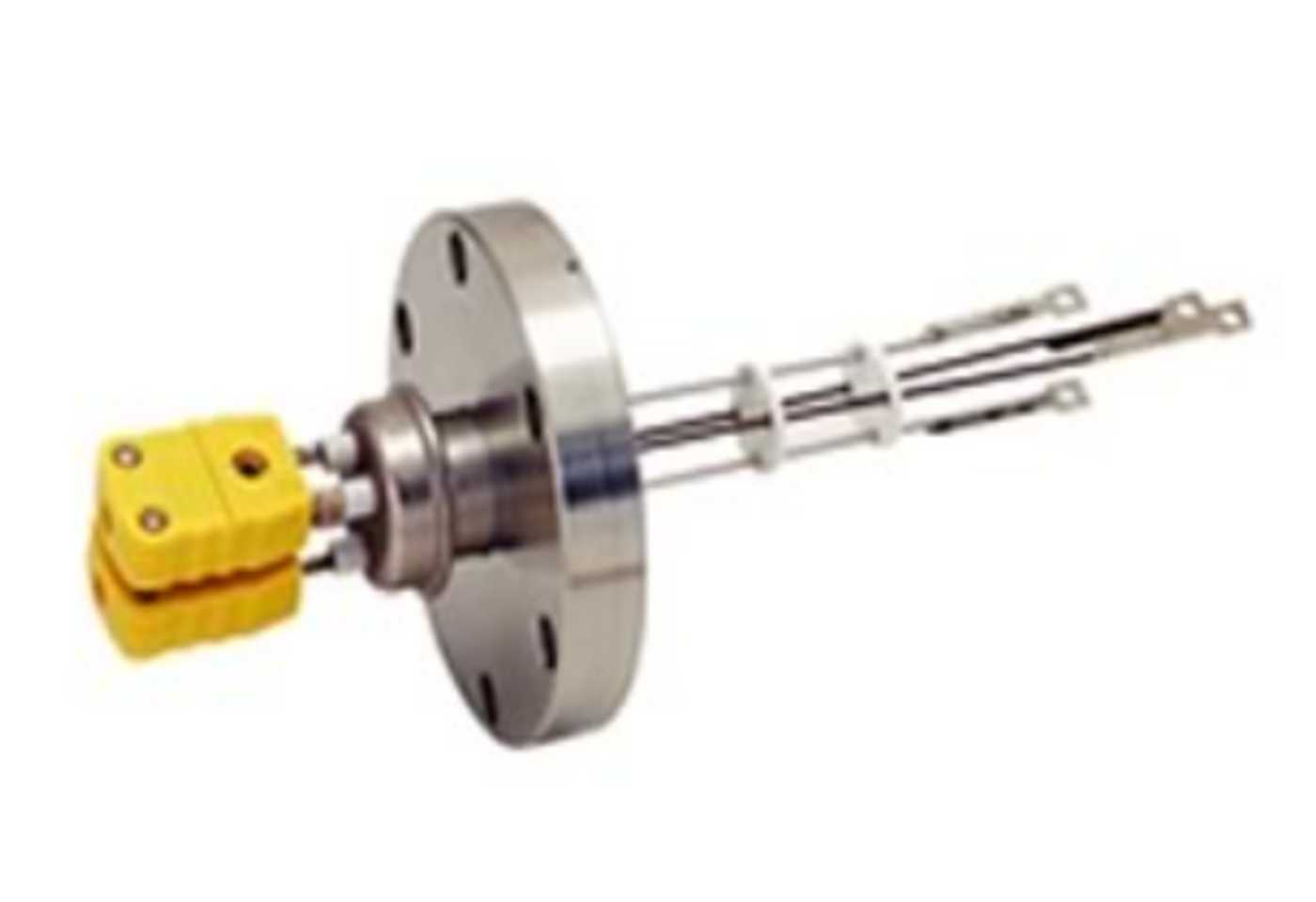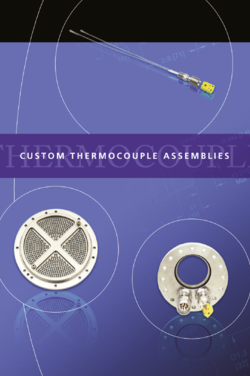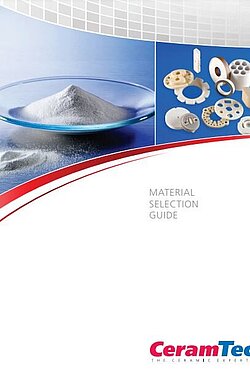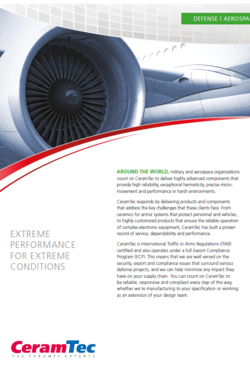Ceramaseal® Thermocouples
Ceramaseal® thermocouples are manufactured with thermocouple materials or compensating material and transmit the electromotive force (EMF) generated by the application of heat to the thermocouple bead through the wall of the chamber without introducing error.
External instrumentation can then evaluate the strength of the EMF that is proportional to the temperature at the thermocouple bead, thus yielding a temperature measurement. Ceramaseal® thermocouple feedthroughs from CeramTec provide the necessary electrical isolation and a hermetic seal. CeramTec uses compensating wires for refractory and noble metal thermocouples. The joints between the compensating material and the true thermocouple conductor material must be thermally shielded and not exceed 250°C.


Are you interested in our products & solutions?
Go directly to our online shop.

Ceramaseal® thermocouple feedthroughs use only inorganic materials. The insulators are made from high-purity, high-strength, low-loss alumina ceramics. Hardware metals include Kovar®, stainless steel, nickel, copper, nickel-iron alloys, cupro-nickel alloys, and molybdenum. Conductor materials and contacts include Chromel®, Alumel®, Alloy 405, Alloy 426, Alloy 11, copper, Constantan®, and iron. Alloy 11, copper, Alloy 405, and Alloy 426 are used as a compensation material in C, R, and S feedthrough types.
Thermocouple standard specifications
- Cryogenic temperature range: (-269°C) to 450°C
- Internal pressure from 1x10-10 torr to 241 bar (3500 psig)
- Thermocouple types (ANSI) C, E, J, K, R, S, T
- Single to 20 pairs
Custom designs and solutions
- 940-pin feedthrough using thermocouple materials
- Sub D connectors using thermocouple materials
- Single pair high-temperature cable end seal in a special plug design
ANSI Type
| ANSI Type | Thermocouples | Polarity | °C | EMK (mV) |
|---|---|---|---|---|
| T | Copper Constantann | + - | -200 to 350 | -5,60 to 17,82 |
| K | Chromel Alumel | + - | -200 to 1.250 | -5,9 to 50,63 |
| J | Iron Constantan | + - | 0 to 750 | 0 to 42,28 |
| S | Platinum 10% Rhodium Platinum | + - | 0 to 1.450 | 0 to 14,97 |
| R | Platinum 13% Rhodium Platinum | + - | 0 to 1.450 | 0 to 16,74 |
| C* | Tungsten 5% Rhenium Tungsten 26% Rhenium | + - | 0 to 2.315 | 0 to 37,06 |
| E | Chromel Constantan | + - | -200 to 900 | -8,82 to 68,78 |
*Not an ANSI symbol
Braze materials used are silver, copper, silver-copper, or gold-copper alloys. Metalization processes include both refractory-metal and active-metal metalizations, depending on the size, geometry, and performance requirements for the seals. CeramTec uses advanced techniques and methods to control and monitor critical processes, including 100 percent helium leak testing and x-ray measurements for metalization control.
Standard installation mountings for Ceramaseal® thermocouples include:
- Welding (pulse-TIG, TIG, laser, E-beam welding)
- ISO KF flange
- ConFlat flange
- NPT fitting (see Pressure section)
- 1" baseplate (see Baseplate section)




